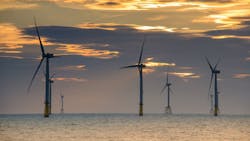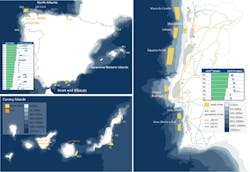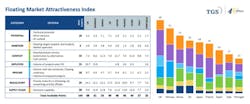Consultants scale back growth forecast for floating offshore wind
Offshore staff
OSLO, Norway — Forecast installation of floating offshore wind energy in 2030 and 2035 has been adjusted downward for the second time in 12 months, according to the latest market intelligence report by TGS and 4C Offshore, representing a 25% downgrade year-on-year for the 2030 outlook.
The twice-yearly Floating Offshore Wind Report forecasts that 12.4 GW of potential floating wind capacity will be operational or under construction globally by 2030, rising to 39 GW by 2035.
These figures are down 1.8 GW and 6.4 GW, respectively, to the previous analysis from fourth-quarter 2022.
According to TGS, the main cause is the slowing of the process of attaining offtake contracts and permits, which has led to greater volume being shifted post-2030. Of the forecast 12.4 GW by 2030, 6-7 GW now looks set to be operational, with the remainder under construction.
The report also finds that the UK remains the world’s most attractive market for floating wind, followed by Norway, South Korea, the US and Japan.
Analysis of floating offshore wind’s levelized cost of energy (LCOE) and capex for existing and future projects suggests that LCOE will fall over time but at a slower rate than expected due to rising supply and capital costs.
TGS and 4C Offshore expect energy costs for floating wind to be about €85-100/MWh by 2030 (for projects starting offshore installation), €70/MWh by 2035 and €50/MWh by 2040.
The pathway to €50/MWh, the companies added, can be secured via scale economies, decreasing capital costs, technology innovations and longer lifetimes.
Director of Research Richard Aukland said, "Floating wind holds a lot of promise, but delivery is challenging. Offtake visibility is currently limited, and regulatory uncertainty is high in key emerging floating markets. There are many countries whose processes have not yet been tested and matured through bottom-fixed wind. Consequently, we don’t expect the build-out of floating wind to scale significantly until after 2030.”
4C Offshore, a TGS company, is a market intelligence organization for global offshore renewable energy markets.
06.26.2023


